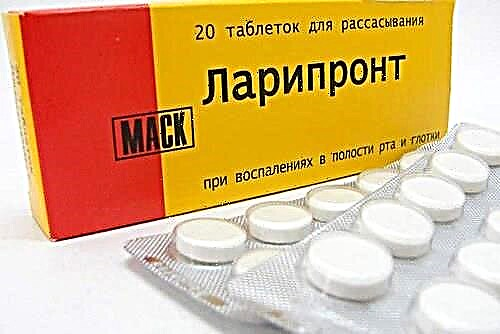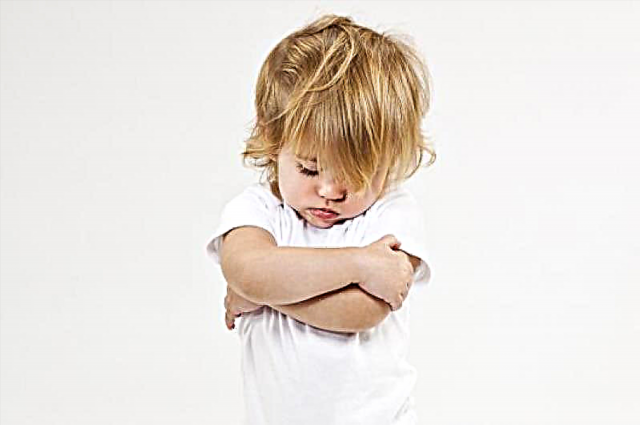Any unvaccinated child or adult can get measles. The disease has characteristic symptoms that make it possible to detect it at an early stage. But this will not give a full guarantee that there will be no complications, in rare cases leading to death.

Baby
Why measles is dangerous
Measles is an infectious disease that has no cure. Therapy is designed to alleviate the symptoms - medications relieve unpleasant manifestations, making the patient feel better, but they do not work against the pathogen itself.
Important! When the first symptoms of intoxication appear, you should consult a doctor. Improper treatment or lack of it can lead to dangerous consequences. So, a child under one year old must be monitored in a hospital.
Whether a baby can contract the measles virus depends on the type of feeding. If a child eats mother's milk, then antibodies that protect against disease enter his body. Baby "artificial" are at risk, so they need to be protected from contact with sneezing and coughing people.
Note! Measles is one of the most contagious diseases, which is unlikely to be avoided without immune protection if a person infected with the virus is nearby.
Disease types
Measles can be classified according to a number of characteristics:
- According to the severity of the course of the disease, there are mild, moderate and severe forms;
- Depending on the severity of the manifestation of symptoms, typical and atypical are distinguished.
Measles, which occurs in vaccinated children, is also isolated separately. It resembles ARVI, which is mild. Happens 4-6 days after vaccination. A living but weakened virus enters the body, so symptoms may appear. You should not be afraid of this, which means that the body is working, immunity is created and the next time it is faced with a disease, it will rebuff it.
The atypical form of measles is of several types:
- Erased - characterized by the fact that some symptoms are excluded, usually a rash does not appear on the body;
- Mitigated - more like rubella. In case of illness, the temperature does not reach critical values, the rash does not have a pronounced character. Spots in the mouth may not be observed at all;
- Abortive - at first it proceeds as a typical form. After the period of rashes comes, the disease abruptly recedes.
Some atypical forms are accompanied by dangerous symptoms, up to the onset of seizures, damage to the nervous system. However, they develop extremely rarely.
Measles Infection Routes
Measles is a viral disease that can be transmitted from an infected person. It spreads by airborne droplets. The virus is highly volatile, therefore, even being in the same room with a patient, there is a high risk that unpleasant symptoms will be found after the end of the incubation period. Measles can even spread through ventilation, so the infected person becomes dangerous for all residents of the entrance, at home.
Note! The best way to surely protect the baby from measles is by breastfeeding and subsequent vaccination according to the vaccination schedule.

Natural feeding
In the external environment, the virus dies quickly enough. The chance of contracting measles by touching, for example, a rail on public transport is very low. In childcare facilities, babies exchange toys, often pulling them into their mouths. This is where the risk of becoming infected increases.
Disease periods and characteristics
Signs of measles in a child have a number of characteristic features. The most important thing is the pronounced stages of the course of the disease:
- The incubation period can last from one to three weeks. In the last two days, when the signs are still invisible, the baby is already becoming infectious;
- The catarrhal phase lasts about 3-5 days and is characterized by a slight rise in temperature, it does not exceed 38 degrees. The baby begins to have a runny nose, cough, eyes may turn red, it seems that he is getting SARS. The behavior of the baby changes, he becomes lethargic, apathetic, irritable. The main symptom is a rash in the mouth. They concentrate on the mucous membrane of the cheeks, can be observed in the palate. The rash is gray-white with a red border and a slight bump in the center;
- The stage of the rash begins with the appearance of spots behind the ears, on the scalp. They become noticeable not only on the face, but also on the neck, upper chest. After a couple of days, the rash spreads throughout the body, as a result, it is observed on the feet, fingers. By this time, the spots on the face are already starting to fade. During this period, the temperature can rise to 40 degrees. The cough gets worse, becomes barking. Conjunctivitis progresses, children wake up with eyelashes glued together from pus;
- The pigmentation period begins 3-4 days after the appearance of the rash on the face. The condition is normalized, the fever recedes. Gray-brown spots are peeling. Over time, they will disappear without a trace. The child still wants to sleep, irritability remains.
It is good when the disease can be recognized at the catarrhal stage, it is especially important to timely diagnose the infection with measles in the baby, which may begin to have serious complications. Measles symptoms in children under one year old can be more pronounced, significantly worsening their condition. For any warning signs, parents should immediately contact an ambulance.

Measles in the stage of eruptions
Measles in children under one year old
Measles is dangerous for babies - it is difficult for them and can be fatal. It weakens the immune system, as a result, a bacterial infection joins, and chronic diseases are exacerbated.
Note! If a child detects symptoms of measles and any other disease, accompanied by fever, refusal to eat, weakness and other signs of intoxication, you should immediately call an ambulance.
Measles in vaccinated children
To protect your baby from the measles virus, you need to be vaccinated at a year and a revaccination at 6 years old. This is enough to keep the child from getting sick. The vaccine does not give a lifetime guarantee, antibodies gradually cease to be produced, and in adulthood it is recommended to re-introduce the drug.
Diagnostics
An experienced doctor knows how to tell if a child has measles - an examination is usually sufficient. It is necessary to remember the specific signs of the disease: damage to the conjunctiva and a rash on the oral mucosa that appears during the catarrhal period. A general analysis of urine and blood is prescribed. In rare cases, if there are complications, a chest x-ray and electroencephalography are recommended. Sometimes a test is done to determine if the blood contains measles antibodies.
Complications after measles
Negative consequences after an illness occur infrequently, the disease is most dangerous for children under one year old.
Among the complications:
- Laryngitis;
- Croup;
- Bronchitis;
- Pneumonia;
- Meningitis;
- Encephalitis.
Note. Any complication, especially in a child under one year old, is an indication for hospitalization, the refusal of which can lead to sad consequences.
General recommendations
Children's infections occur in babies in different ways, each organism reacts in its own way to the spread of the virus. Any disease is easier to prevent, but if measles could not be avoided, parents should know what to do so that the baby recovers faster.
How to avoid infection
Whether a baby can get sick, particularly measles, depends on his immunity. It is believed that babies on gv get sick less often than crumbs eating mixtures. Mom's milk protects by supplying the body with antibodies that increase resistance to infections.
In a one-year-old child, measles is excluded if the baby is vaccinated. Vaccination is carried out at the age of 12 months, if the crumbs have no contraindications. Before the procedure, the child is examined by a doctor, who recommends passing urine and blood tests to rule out disease and inflammation.
Note! Only a healthy baby is allowed to vaccinate, otherwise the body's reaction may be unpredictable.

Vaccination
Komarovsky urges not to give up the vaccine, thinking about the health of the child. He recalls that measles is a dangerous disease, after which complications can be fatal.
Compliance with the regime
If measles diagnosed in newborns requires observation in a hospital, then grown-up babies can be treated at home. The main thing is to ensure bed rest, give the baby more liquid and monitor the diet. If a child has an inflamed mucous membrane of the eye, then in his room you need to dim the light.
Emergency prevention
After contact of a healthy child with a sick measles, emergency prevention is carried out. It consists in administering the vaccine for several days from the moment of meeting with the infected.
Nutrition
Proper nutrition will help to quickly cure measles in a child. You can not force the baby to eat during a period of high temperature, when he feels bad. He must drink. During illness, it is necessary to provide the crumbs with foods containing vitamin A. Its deficiency is fatal for a weakened body. It is necessary to give the child low-fat fermented milk products, as soon as the appetite is restored, prepare liquid soups and cereals.
Council. It is important that the food is grated, it is better to refuse hot and cold drinks, remembering that the child has a rash in the mouth, which is better not to injure once again.

Kid eating
Prevention
The main way to protect a child from measles is to vaccinate him. Vaccinations are routinely carried out in all clinics. If the child is healthy, the vaccine is given to him at 12 months. A triple vaccine is commonly used, which also protects against rubella and mumps.
The peak incidence of measles usually occurs between October and April. At this time, it is worth limiting visits to public places.
Young mothers, fearing for the health of the baby, are interested in whether a child under one year old can get measles. In pediatrics, it is generally accepted that breastfed babies are immune to infection, the rest are at risk. Vaccination is the surest way to prevent infection.



